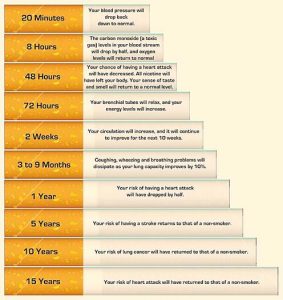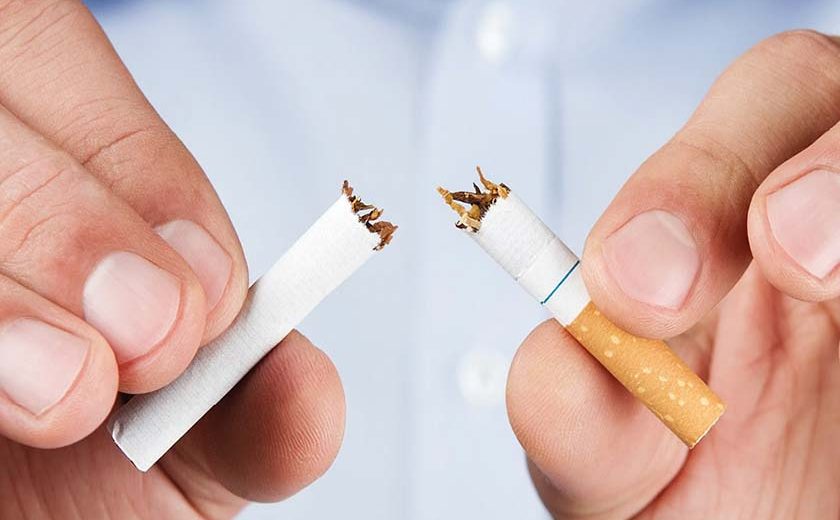Smoking is one of the most common forms of recreational drug used. In 20th century, smoking came to be viewed in a decidedly negative light, especially in Western countries.
This is due to smoking tobacco being among the leading causes of many diseases such as lung cancer, heart attacks, COPD, erectile dysfunction and birth defects.

Dr Shirley Tan Lan Eng
Consultant Respiratory & Physician
MD (Taiwan), FCCP (USA), AM (Mal)
Tropicana Medical Centre
The Malaysian Statistics
Tobacco harms the health, treasury and spirit of Malaysia. Every year more than 19,100 people are killed by tobacco-caused disease. In 2015, approximately 22.8% of Malaysian population aged 15 years and above were smokers, 43% of men and 1.4% of women smoked manufactured cigarettes, hand-rolled and smokeless cigarettes. Out of the current smokers, 20.5% were daily smokers, 28.8% of men and 1.1% of women. Approximately 60% of current smokers smoked 15 sticks of cigarettes and above. More than half (52.3%) adult smokers (current smokers) had tried to quit smoking in the past 12 months. However, only one out of ten smokers who attempted to quit smoking in the past 12 months visited health care providers, of which three quarter of these smokers had been advised to quit smoking.
The GATS 2011 showed prevalence of current smokers in Malaysia was 23.1%, or equivalent to 4.7 million of Malaysian aged 15 years and above. The prevalence of male current smokers was significantly higher at 43.9% compared to 1.0% among female. Tobacco smoke is a complex mixture of over 5000 identified chemicals, of which 98 are known to have specific toxicological properties. The most important chemicals causing cancer are those that produce DNA damage, since such damage appears to be the primary underlying causes of cancer.
Who Smokes After All?
Most tobacco smokers begin during adolescence or early adulthood. The presence of high status models or peers may also encourage smoking. Smokers often report that cigarettes help relieve feelings of stress. However, the stress levels of adult smokers are slightly higher than those of non-smokers. Smoke decrease lung capacity, cigarette smokers have lower level of lung function than those who never smoked, smoking reduces rate of lung growth. Smoking also hurts physical fitness in terms of both performance and endurance. The resting heart rates are two to three beats per minutes faster than non-smokers. Smokers suffer from shortness of breath almost three times as often as teens who don’t smoke, and produce phlegm more than twice as often as teens who don’t smoke.

The Health Effects of Smoking
Smoking compromises the immune system, making smokers more likely to have respiratory infection. Smoking also causes several autoimmune diseases, including Crohn’s disease and rheumatoid arthritis. Smoking doubles your risk of developing rheumatoid arthritis. Smoking also been linked to type 2 diabetes, smokers are 30-40% more likely to develop type 2 diabetes than non-smokers. Smoking not only can increase cancer risk in lung, but also other organ like nose, mouth, larynx(voice box), oesophagus (food pipe), liver, stomach, pancreas, kidney, colon and also bladder.
Recent studies show a direct relationship between tobacco use and decreased bone density. Significant bone loss has been found in older women and men who smoke. The chemicals in tobacco smoke also harm blood cells and damage the function of heart, which can increase risk of atherosclerosis, cardiovascular disease, peripheral vessel disease and stroke.
People may question whether light cigarettes are safer? In fact, there is no such thing as a safe cigarette. People who smoke any kind of cigarette are at an increased risk for smoking-related disease. People who smoked light cigarettes in the past are likely to have inhaled the same amount of toxic chemicals as those who smoked regular cigarettes.
Can You Quit?
In view of the side effect of smoking, are you ready to commit to quit smoking? As soon as you quit, your body begins to repair damage caused by smoking. 20 minutes after quitting, your heart rate drops to normal level. 12 hours after quitting, carbon monoxide level in blood drop to normal. After 2 weeks to 3 months, risk of heart attack begins to drop and lung function improving. One year after quitting, the risk of coronary heart disease is half that of a smoker’s. 5-15 years after quitting, risk of having stroke is reduced to that of non-smoker. 10 years later, risk of dying from lung cancer is about half that of a smoker’s, whereas after 15 years the risk of coronary heart disease is same as that of a non-smoker.
5 Steps to Quit Smoking
There are different aids that can help you to stop smoking, but the most important is you have the will to do so. Your first day without cigarettes might be difficult. Here are five steps you can take to handle quit day and be confident about being able to stay quit.
First, you need to make a quit plan and set a quit date. Keep yourself busy is a great way to stay smoke free on your quit day, being busy can help you keep your mind off smoking and distract you from craving. Try to think about trying some of these activities: exercising, gum chewing or hard candy, drink lots of plain water, spend time with non-smoking friends and family. The most important is to stay positive and avoid smoking trigger.
You can always ask for medical advice or counselling to help you to quit smoking. Nicotine replacement therapy (NRT) is the most commonly used in the family of quit smoking medications. Addiction to nicotine in tobacco is the main reason why people continue to smoke. NRT reduces withdrawal symptoms by diving you a small controlled amount of nicotine, but none of the other dangerous chemicals found in cigarettes. This small amount of nicotine helps satisfy your craving for nicotine and reduces the urge to smoke. NRT comes in variety of forms that are used in different ways, including patch, gum, lozenge or even nasal spray.
Champix (Varenicline) is the latest anti-smoking drug to win FDA approval, works by blocking nicotine receptors in the brain. This drug is usually prescribed for 12 weeks period, with the option of another 12 weeks maintenance course. NRT or Champix can’t do all the work. It can help with withdrawal and craving, but it won’t completely take away urge to smoke. Combination NRT or medicine with other strategy can improve your chances of quitting and staying quit. Counselling and support groups have been shown to improve smokers’ odds of successfully quitting. The best combination of approaches is the one that feels right to you.


